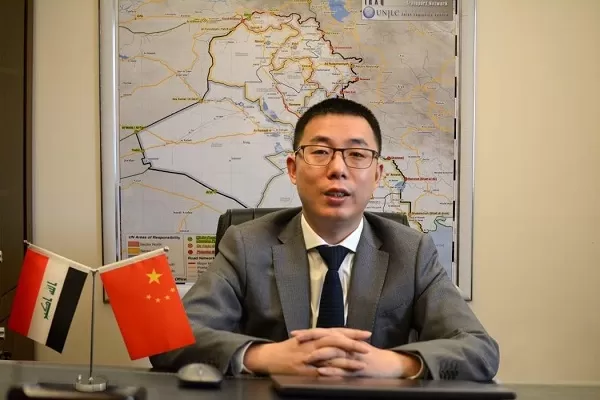4G will keep evolution of foundation network for full services to brace new business opportunities

By Gavin Wang, CEO, Huawei Iraq
In the past, the infrastructure network relied on 2G/3G and voice services as the core services. As consumer service requirements diversified, data services replaced voice as key services. In addition, networks have become increasingly complex. Operators have to maintain multiple networks of 2G, 3G, and LTE. Selecting an infrastructure network for an operators' core services has become absolutely necessary. Data services emerged in the 2G era, grew in the 3G era, and diversified in the 4G era.
Digital technologies enable continuous innovation across a diverse range of industries. The ICT, media, finance, and insurance sectors are the current leaders in digital transformation. But this digitalization is also accelerating in the retail, automobile, oil and gas, chemical engineering, healthcare, mining, and agriculture sectors.
In recent years, requirements for wireless network applications have grown rapidly, not only from individuals, but also from households and vertical industries. The value chain is constantly changing. All these factors inject great potential into wireless network development and bring tremendous opportunities and challenges in network operation.
The 4G LTE infrastructure network is promoting a transformative upgrade in traditional industries. With such a network, operators can proactively explore multiple new industry ecosystems and business models while optimizing their existing services. They can create unprecedented value in sectors as diverse as the IoT, Internet of Vehicles (IoV), Internet of Elevators, Internet of Cows, and public safety.
Never before have people been able to communicate with one another so freely and conveniently. With the increasing penetration of broadband, maturing social media, and the proliferation of powerful yet cheap multimedia devices, the Internet has become a major medium for both consumer and business communications. In addition, advertisers, vendors of fast-moving consumer goods (FMCGs), and social networks use the Internet to connect with consumers. Enterprises can use the Internet to cultivate user loyalty, allocate and supervise work, and coordinate with suppliers and partners based in different areas.
Despite currently dominating one-to-one communications, carriers are now increasingly challenged by newcomers who use open platforms to meet fast-changing and varied customer needs. Carriers must find ways to secure their position in an ever-changing industry if new growth opportunities are to be seized. LTE can greatly improve the mobile service experience, create new value, and even enable new business models and ecosystems.
The enterprise market offers carriers a great opportunity to increase revenues. By opening communications capabilities to third parties as a service (CaaS), telcos can achieve their ultimate goal – communication monetization. The key is to allow third parties to explore carriers' rich communications capabilities at both the network and terminal sides, in a simple and intuitive manner.
There is a need for operators, regulators, and ecosystem partners to collaborate on digital inclusion efforts, highlighting the potential of such campaigns to increase access to critical services that enable environmental protection, healthcare, and education.
There are major social benefits to digital inclusion, pointing to a “significant correlation” between Internet adoption and increases in GDP, living standards, and access to education and financial services. Indeed, economic modelling by the International Telecommunication Union (ITU) reports that a 10 percent increase in mobile broadband penetration produces a 1.5 percent increase in GDP. The data showed a heightened impact in developing regions such as Africa, where the same increase in penetration was estimated to yield a 2.5 percent uplift in GDP.
There are a number of factors preventing more people from going online, including a lack of digital literacy, affordable devices, content, and user concerns about privacy and security. More must be done to address issues relating to the economics of rural deployments, which typically come at a high cost with “very, very diminished revenue” returns. Collaboration is key and the need for policy alignment or collaborative policy and regulation in digital ecosystem is important.
To support a wide enough range of different services, continuous and long-term network development is absolutely necessary. There is unprecedented buzz around 5G, because it can create a world boasting services and products like "Mobile Beyond Giga", "Real-Time World", and "All Online Everywhere". 5G networks will offer an unprecedented leap in bandwidth speeds in comparison to previous mobile networks. However, although many countries is putting the roadmaps for 5G implementation, 4G Wireless Broadband (4G WBB) is still a good choice for governments and operators to construct national broadband and /or offer home broadband service alternatively with Fixed Broadband (FBB) due to its advanced technologies and mature eco-system.
4G LTE will keep evolution to create a foundation network for full services to brace new business opportunities. The growth of 5G networks doesn't mean 4G is going away. Mobile carriers will use existing 4G LTE networks to provide their customers' cell service well into the next decade. 5G networks will work with 4G, not outright replace it.












